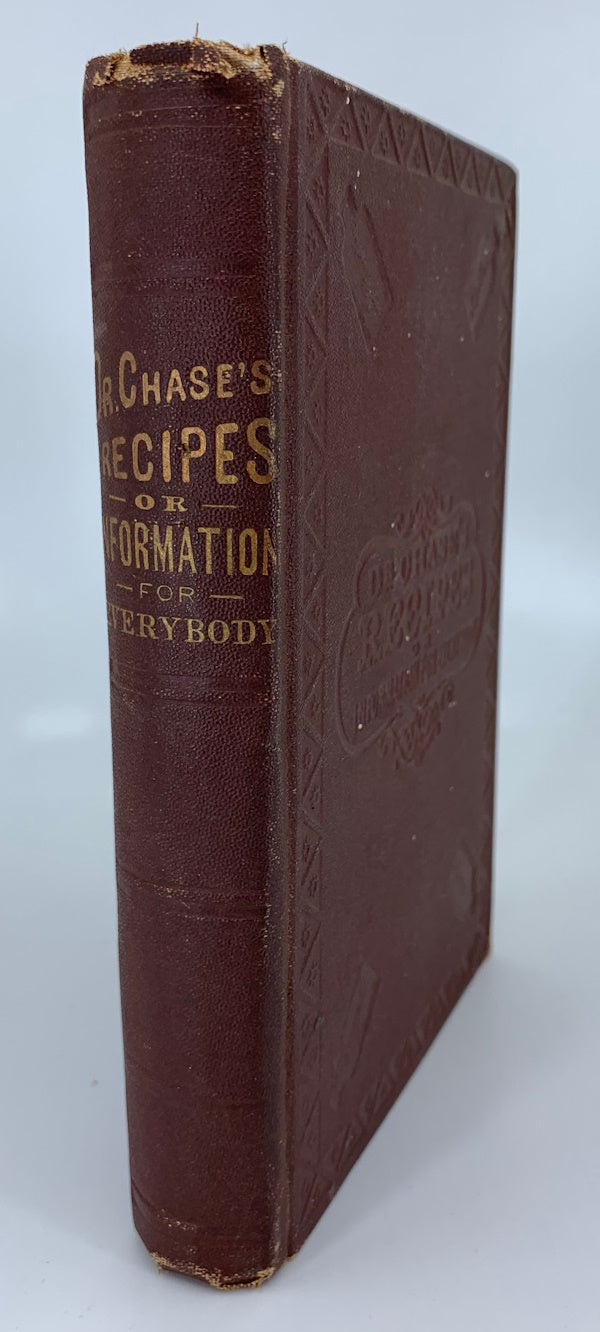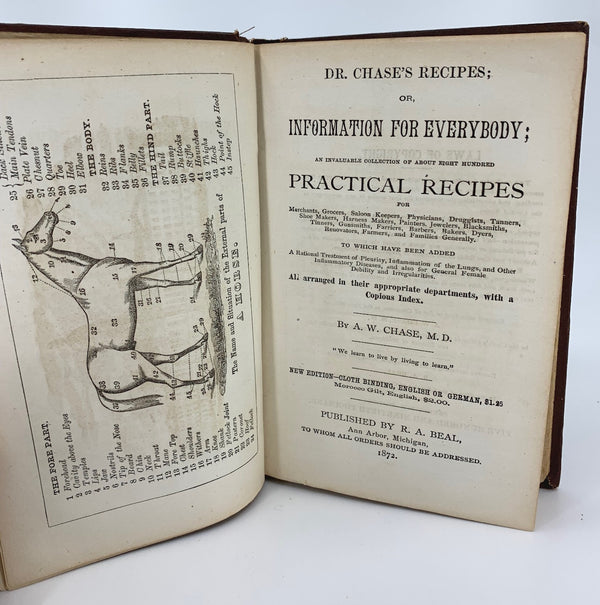OP: Dr. Chase's Recipes; or, Information for Everybody
Dr. Alvin Wood Chase (1817–1885) made a living as a traveling salesman of ointments and remedies until pursuing a medical degree in his 40s, perhaps with the hope that an “M.D.” following his name might lend some credibility. Settling in Ann Arbor, Michigan, Chase published a series of books filled with the knowledge he had gained over the course of his career. The most well-known of these we offer here.
This immensely popular book, first self-published in the 1850s, was an expansive resource and sold hundreds of thousands of copies, undergoing a number of revisions and updates before being taken over by a local publishing company in the 1860s. The “recipes” in the title refer to seemingly everything required for the survival and self-sufficiency of homesteaders in the expanding West.
Indeed, the extravagant title page of our 1872 edition says it all: “An Invaluable Collection of About Eight Hundred Practical Recipes for Merchants, Grocers, Saloon-Keepers, Physicians, Druggists, Tanners, Shoe Makers, Harness Makers, Painters, Jewelers, Blacksmiths, Tinners, Gunsmiths, Farriers, Barbers, Bakers, Dyers, Renovators, Farmers, and Families Generally.”
Browsing this 400-page extravaganza provides a rewarding entrée to life in the 1800s, serving up the richest possible context for those engaged in the study of food history. The book’s chapters—what the author calls the Farm Department, Saloon Department, Cooking and Baking Department, Medical Department, etc.—reveal many of the subtler elements of food culture, ranging from production and markets, to theories of health, social attitudes, and more.
Of course, satisfying comestibles—ranging from oyster soup and pickled tripe to popcorn balls—can also be found among advice for saving cattle from snake bites (apply mud to the wound), repairing broken saws (solder with a silver alloy and coal dust), and increasing the laying capacity of hens (add cayenne to their meal).
This updated edition is sturdy and clean. The brown cloth case is gold-stamped on the spine and blind stamped on the front and back with a decorative border, a medallion, and labeled bottles. The head and foot of the spine are worn and beginning to fray, and the pages have begun to discolor, but the high quality materials used ensure a long life yet in these pages.



